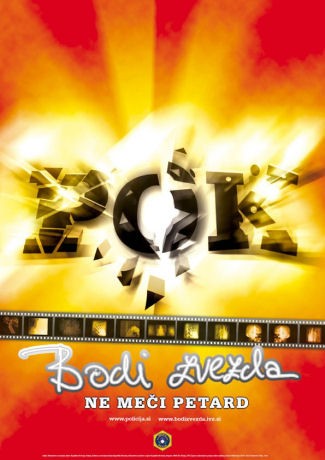The use of pyrotechnic articles to mark the end of the year is for many people a source of happiness and fun, but we should not forget those who dislike loud bangs, who are scared by them, and to whom they represent a particular form of violence. The use of pyrotechnic articles whose main effect is a loud bang (firecrackers) is particularly disturbing to them.
Once again this year the police have prepared, in conjunction with the Health Protection Institute of the Republic of Slovenia and the Ministry of Education and Sport, a variety of preventive activities designed to prevent the negative consequences of using pyrotechnic articles. During the festive season police officers, the internal affairs inspectorate, the market inspectorate and the customs service will carry out more stringent controls in connection with the sale, illegal use and import of these products.
We would like to remind citizens that the new Explosive Susbtances and Pyrotechnic Articles Act (OJ RS, No 35/2008) came into force this year. Despite the carefully planned activities by the police and other state bodies, several people are injured every year when using pyrotechnic articles, particularly firecrackers. Police officers also deal with various criminal offences relating to property damage. These problems have now been addressed by new legislation. The new Explosives and Pyrotechnic Articles Act adopted this April contains important provisions in relation to the use of firecrackers, the pyrotechnic articles that cause the most annoyance.
The most important new feature of the Act is the ban on the sale, possession and use of category 2 and 3 fireworks whose main effect is a bang (these are mainly firecrackers of various sizes and strengths).
We particularly draw attention to the fact that the thoughtless and imprudent use of pyrotechnic products often causes physical injuries (burns, lacerations of hands, damage to eyes, etc.). It also frightens animals and pollutes the environment.
The sale of category 1 pyrotechnic articles whose main effect is a bang is only permitted from 19 to 31 December, while the use of these devices is only permitted from 26 December to 2 January.
Young people under 14 and young people under 16 are allowed to use category 1 and category 2 pyrotechnic articles respectively but only under the supervision of parents or guardians.
It should be remembered that the use of these devices is prohibited in residential neighbourhoods, in buildings and closed premises, in the vicinity of hospitals, aboard public transport and in areas where public gatherings and public events are taking place.
During this period police officers will visit schools, either on their own or with representatives of the local community, by agreement with primary school head teachers, and talk to 6th-year pupils about the problems surrounding the use of pyrotechnic articles and their harmful consequences. During their talks they will distribute a leaflet containing a questionnaire.
Individual police directorates and police stations will carry out other activities in conjunction with local communities and in this way try to warn citizens of the dangers surrounding the use of pyrotechnic articles. The police's media activities will be directed towards drawing the public's attention to the dangers of the improper use of pyrotechnic articles and a presentation of the police's powers to act in the case of violations.

Categories of pyrotechnic articles:
The Explosives and Pyrotechnic Articles Act categories pyrotechnic articles as follows:
- Fireworks, i.e. pyrotechnic articles designed for amusement, in the following categories:
- category 1 - fireworks which present a very low hazard and negligible noise level and which are intended for use in confined areas, including fireworks which are intended for use inside domestic buildings and other closed premises. Typical products are Bengal matches, exploding cigarettes, confetti bombs, exploding frogs, small firecrackers, etc.;
- category 2 - fireworks which present a low hazard and low noise level and which are intended for outdoor use in confined areas. Typical products are Roman candles, small Catherine wheels, Bengal torches, batteries and combinations, etc.;
- category 3 - fireworks which present a medium hazard, which are intended for outdoor use in large open areas and whose noise level is not harmful to human health. Typical products are Roman candles, Catherine wheels, Bengal torches, batteries and combinations, etc.;
- category 4 - fireworks which present a high hazard, which are intended for use only by persons with special training (commonly known as fireworks for professional use) and whose noise level is not harmful to human health.
- Theatrical pyrotechnic articles, which are divided into two categories:
- category T 1 - pyrotechnic articles for stage use which present a low hazard
- category T 2 - pyrotechnic articles for stage use which are intended for use only by persons with specialist knowledge.
- Other pyrotechnic articles are divided into the following two categories:
- category P 1 - pyrotechnic articles other than fireworks and theatrical pyrotechnic articles which present a low hazard;
- category P 2 - pyrotechnic articles other than fireworks and theatrical pyrotechnic articles which are intended for handling or use only by persons with specialist knowledge.

